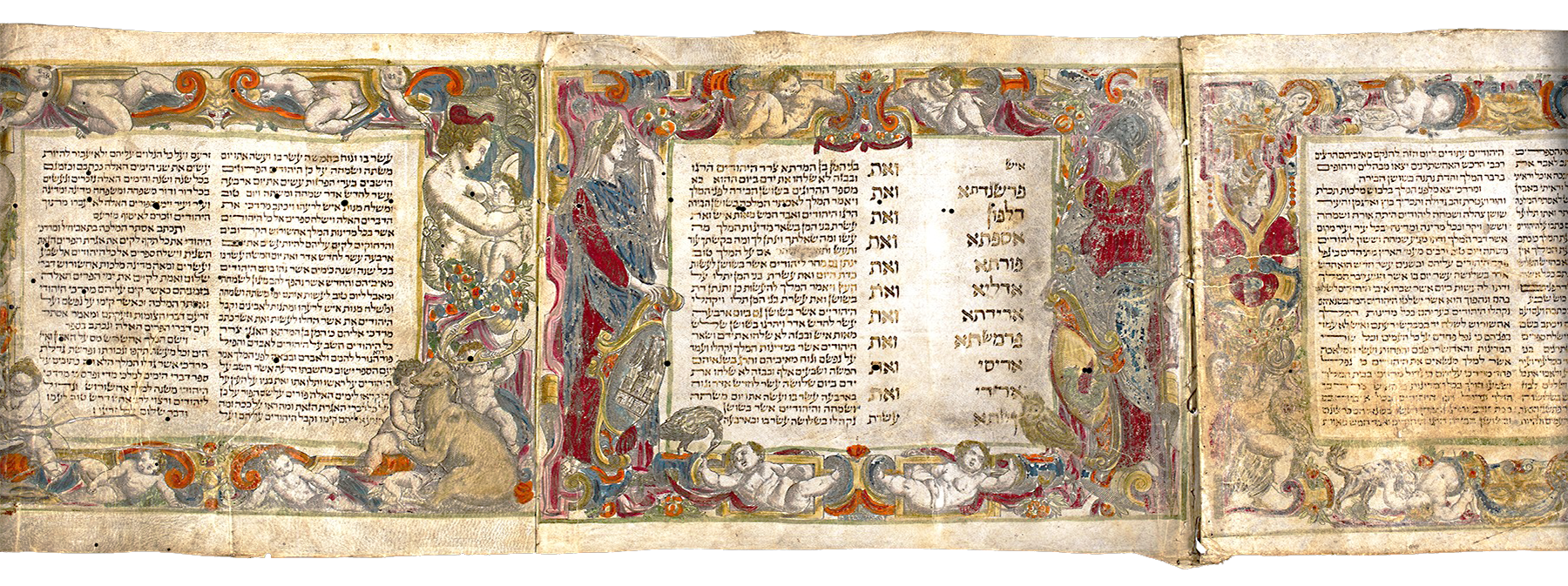
Bible, History, Archaeology
Bible,
History,
Archaeology
Megiloth
or the Five Rollers
Contents:
Intro – The Song of Songs – The Book of Ruth – A Torah collection – The Book of Lamentations – Ecclesiastes – The Book of Esther
The Five Scrolls or Megiloth (חמש מגילות, Hamech Megilote or Homeish Megilôs) are a subdivision of the Ketuvim (other «Sacred Writings» of the Hebrew Bible).
Five rolls include :
1. The Song of Songs
Its writing is traditionally attributed to Solomon, King of Israel. The text is read in synagogue on the Sabbath of Passover and, in Sephardic tradition, at the service every Friday evening.
2. The Book of Ruth
Read at Pentecost. The story of Ruth takes place when the Judges ruled the people of Israel. It shows how a foreign woman not only joined the people of Israel, but became the ancestor of King David. The story emphasizes the Moabitess Ruth's exemplary loyalty, both to her in-laws and to YHWH.

Various Torah scrolls stored inside the Holy Ark at the Victoire synagogue in Paris. Olevy, personal work.
3. The Book of Lamentations
Read on the anniversary of Nebuchadnezzar II's destruction of the Temple in 586 B.C. This book consists of five lyrical poems. The first four are acrostic (each verse begins with one of the 22 letters of the Hebrew alphabet). It describes the great sorrow caused by the siege, capture and destruction of Jerusalem.
4. Ecclesiastes
Read for the Feast of Tabernacles. Its theme is the vanity (in the sense of «that which is vain») of human things. The book opens with an observation of impotence and pessimism: everything is vain, i.e. futile and insignificant. «There's nothing new under the sun».». Wisdom equals sorrow, knowledge equals pain. The wise and the foolish meet the same fate in death and oblivion. The insecurity caused by the constant threat of death and injustice among men, and the impossibility of knowing God's plans for the world, make man's destiny fragile and elusive.

This splendid Italian Esther scroll, with beautifully illustrated margins by Andrea Marelli, dates from the 16th century © British Library.
5. The Book of Esther
Read for Purim or Spells.
This last book is the most famous of the five Megiloth: «the Megillah», without precision, most often refers to the Book of Esther.
It relates a series of events over several years: Esther, of Jewish origin, becomes the favorite of the ruler, Ahasuerus. However, under his reign, the great vizier - Haman - intrigues and obtains the power to exterminate the entire Jewish population. Faced with such a threat, Mordecai appealed to his cousin Esther to get the king to rescind the decree condemning them. The king - informed by Esther - took all necessary measures to protect the Jewish population, and condemned the vizier, along with all his sons, to be hanged from the post originally intended for Mordecai. Finally, the Jews established an annual festival, called Purim, to commemorate this miracle.
Each Megillah is traditionally read in public in synagogue throughout the year in many Jewish communities.
